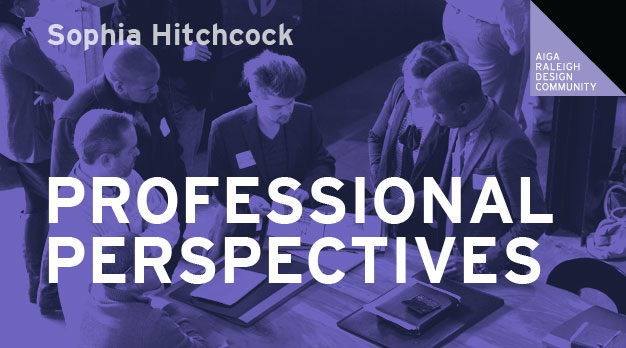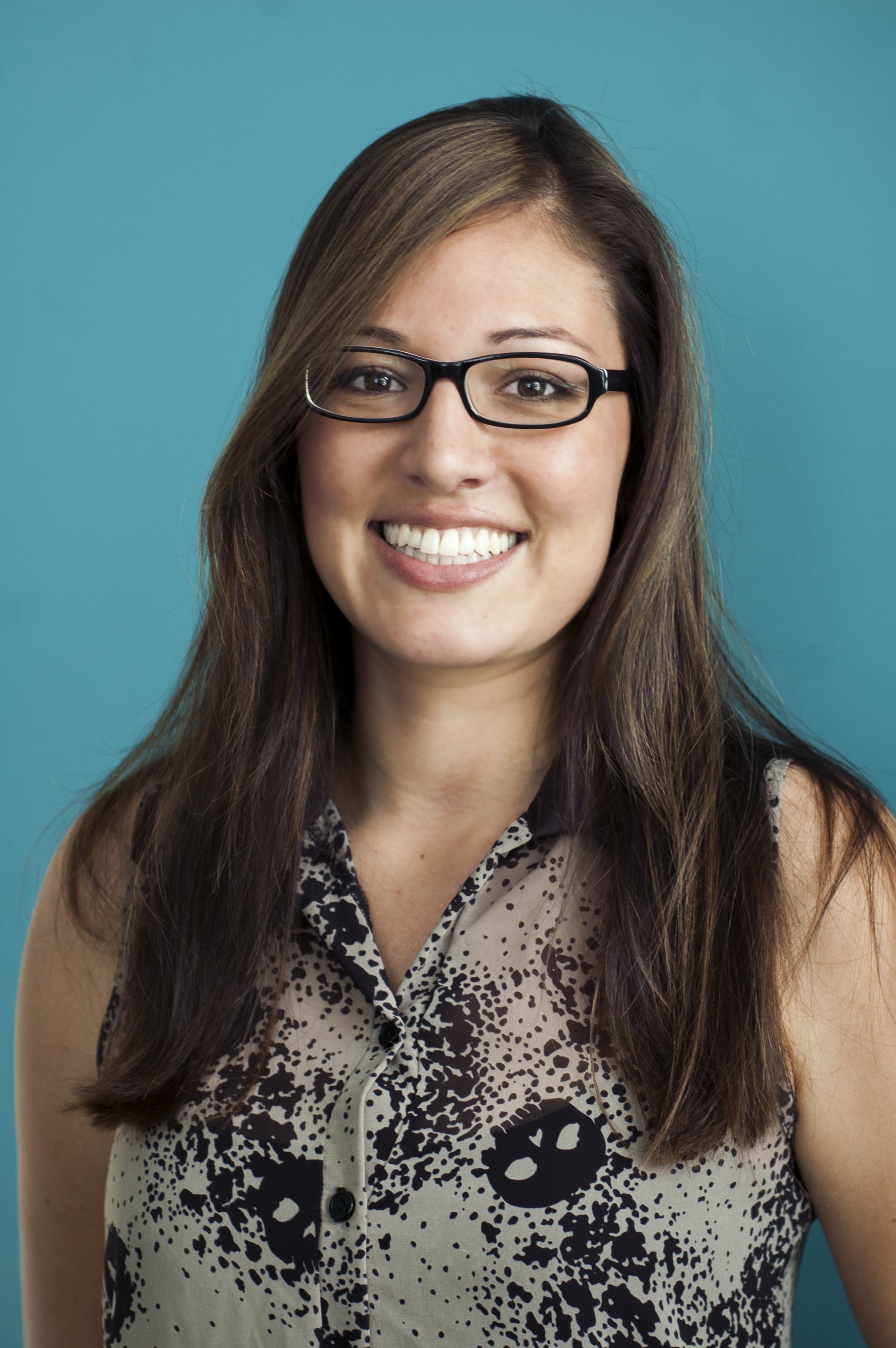
Even though we are designers and we love layouts, we were not all born Ansel Adams. Your Instagram account and the photos you took at your sister’s wedding may tell a different story, but let’s be honest, taking exceptional photos of your design work is a different story altogether. It will require staging your pieces, appropriate lighting, and even photo editing.
Good photos of your design work are essential to an aesthetic print and web portfolio. They will allow the viewer to notice the details, the craftsmanship and the thought that was put into your work.
This week Sophia Hitchcock will answer some of your photography questions. Sophia is a Multimedia Developer and owner of SO|MO Studios, a video production studio specializing in motion graphics, audio recording and special effects.
What is your background in design?
I have a BA in Graphic Design from Meredith College. My professional expertise is Interactive Design and Motion Graphics.
How many AIGA Raleigh Portfolio Reviews have you attended and critiqued?
I have critiqued two reviews and have thoroughly enjoyed it. I will be participating in the 2014 Portfolio Review as a reviewer.
What equipment is needed to photograph my design work?
You do not need a lot of equipment to photograph your work: a camera, appropriate control and/or natural lighting, a photo editing software and maybe a tripod. You will need a good camera, a point and shoot would work. However, if you want your work to look really professional, try to get your hands on a DSLR camera that can shoot your images RAW format. Appropriate lighting is important. Photographing your work in a studio will help you control the lighting and keep it consistent. If you do not have a studio, pick an environment that has lots of natural and even light. Photo editing software will allow you to crop, adjust contrast, brightness, and re-touch any dust or flaws. The tripod will help reduce movement in your pictures.
I am on a budget, what are some DYI tricks I can use to recreate the equipment needed?
If you can’t rent or borrow a DSLR camera, you can use a point and shoot. If you do not have access to a studio, you can recreate an inexpensive light tent and/or lighting in order to photograph your work at home. Another resource is Mockup PSD Templates. These are great for photoshopping your digital design into an environment that looks real. There are many free or low priced resources online where you can find Mockup PSD Templates. I’ve utilized resources like these from Pixeden and Mockup Everything.
What are some things I should avoid when photographing my work?
Make sure if you are using a point and shoot that you are still taking the time to properly set up your work with care and detail. Pay attention to your settings on your camera and the environment lighting that you are using. Use Photoshop as a post-processing tool and make sure you clean your photo up as best as you can to make it look professional. When using the mockup templates be sure not to use the same one for all of your work. The environment should match or compliment the tone and feel of your work.
Should photos be taken with natural or artificial light?
Natural light is best, unless you can take advantage of a studio with controlled lighting.
What format should photos be taken in RAW or Jpeg?
If possible take your photos in RAW. This will give you more detail to work with when you start editing in Photoshop. That being said, if your camera is unable to take RAW photos, don’t despair, most of these images will be displayed digitally online. If you plan to print some of these images, shoot your images with the highest resolution quality option possible.
What file format and size should I use for my web and print portfolio?
Your web portfolio should be displayed somewhere online whether it’s your own website or a free portfolio website such as Behance or Cargo. Your digital work within that website should be displayed as large as possible and if that’s not big enough, include some close up detail shots to really give the viewer a feel for what your design would look like up close.
Your print portfolio should be cleanly assembled, but feel free to take creative liberties in how you present your work. There is no “right way” just make sure you do it with attention to detail. Your print pieces themselves should be pristine as if they are ready to deliver to the client. If you are unable to bring your original print pieces in, you should bring a digital copy of your work.
Should photos of my work be taken in their natural environment or on a white background?
The way you display your work is up to the designer. There is no right or wrong answer here. Sometimes it makes more sense if you see a design piece in its natural environment. Sometimes it takes away from the design and it is more impactful when shown in a minimalistic environment. Consistency and creativity should be considered when choosing a setting for your work.
What are some things I should avoid when photographing my work?
You should avoid bad lighting and distracting environments. Avoid poor indoor lighting if possible. Avoid photographing bad or incomplete work. If you have doubts about a pieces’ quality it’s probably best to leave it out of your portfolio.
If there was one thing you could tell someone who is making their first portfolio, what would it be?
My advice would be to keep your portfolio relatively small and strong. Meaning, choose 8 – 10 of your best pieces and make sure they best represent your talents and strengths. By all means photograph all of your work that you might want to display on your online portfolio but when bringing your portfolio to an interview type situation, you want to have only your best work, and be prepared to talk about each piece.
 Featured Professional:
Featured Professional:
Sophia Hitchcock is a Multimedia Developer for Cisco Systems and owner of SO|MO Studios, a video production studio specializing in motion graphics, audio recording and special effects. She has a passion for interactive design, video production, photography and typography. She also enjoys volunteering and getting involved in her local creative community.
When she is not working or blogging she is probably, testing her photography skills on her Canon Rebel, playing with her two boxer puppies (Winston and Emma), traveling or spending time with family and friends.
Author of this post:
Mayshanna Pandora Briscoe is a Freelance Graphic Designer, Mixed Media Artist and Aspiring Blogger. She has a B.A. in International Business and A.A.S. in Advertising and Graphic Design with a Certificate in Web Technology. When she is not in her studio she can be found experimenting with a new recipe, posting pictures of her design life or food on Instagram, or making memories with her fan club (aka her friends, family and dogs).